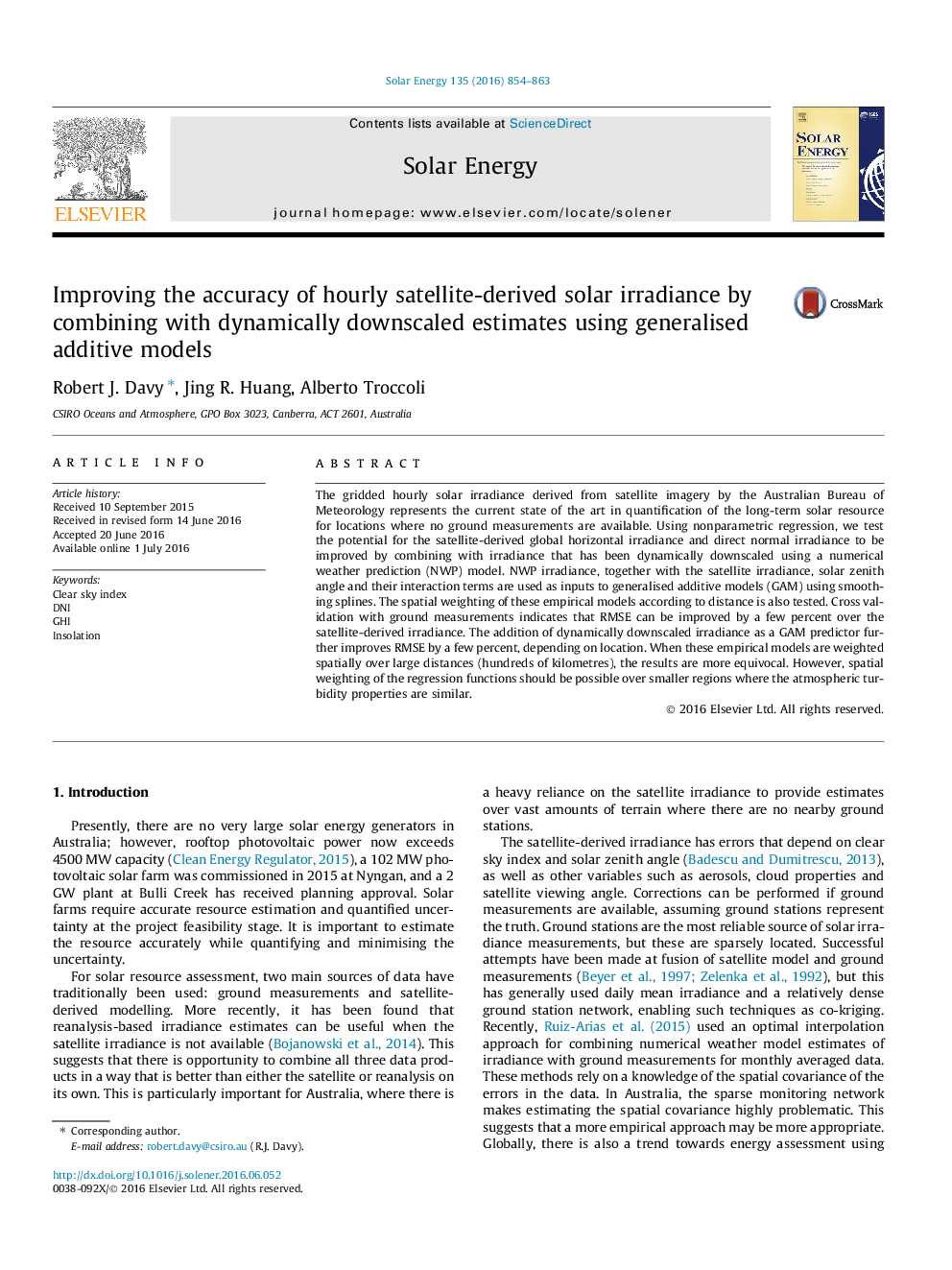| کد مقاله | کد نشریه | سال انتشار | مقاله انگلیسی | نسخه تمام متن |
|---|---|---|---|---|
| 7936940 | 1513083 | 2016 | 10 صفحه PDF | دانلود رایگان |
عنوان انگلیسی مقاله ISI
Improving the accuracy of hourly satellite-derived solar irradiance by combining with dynamically downscaled estimates using generalised additive models
ترجمه فارسی عنوان
بهبود دقت تابش منظومه شمسی ماهانه با ترکیب با برآوردهای پویای تخمین زده شده با استفاده از مدل های افزایشی عمومی
دانلود مقاله + سفارش ترجمه
دانلود مقاله ISI انگلیسی
رایگان برای ایرانیان
کلمات کلیدی
موضوعات مرتبط
مهندسی و علوم پایه
مهندسی انرژی
انرژی های تجدید پذیر، توسعه پایدار و محیط زیست
چکیده انگلیسی
The gridded hourly solar irradiance derived from satellite imagery by the Australian Bureau of Meteorology represents the current state of the art in quantification of the long-term solar resource for locations where no ground measurements are available. Using nonparametric regression, we test the potential for the satellite-derived global horizontal irradiance and direct normal irradiance to be improved by combining with irradiance that has been dynamically downscaled using a numerical weather prediction (NWP) model. NWP irradiance, together with the satellite irradiance, solar zenith angle and their interaction terms are used as inputs to generalised additive models (GAM) using smoothing splines. The spatial weighting of these empirical models according to distance is also tested. Cross validation with ground measurements indicates that RMSE can be improved by a few percent over the satellite-derived irradiance. The addition of dynamically downscaled irradiance as a GAM predictor further improves RMSE by a few percent, depending on location. When these empirical models are weighted spatially over large distances (hundreds of kilometres), the results are more equivocal. However, spatial weighting of the regression functions should be possible over smaller regions where the atmospheric turbidity properties are similar.
ناشر
Database: Elsevier - ScienceDirect (ساینس دایرکت)
Journal: Solar Energy - Volume 135, October 2016, Pages 854-863
Journal: Solar Energy - Volume 135, October 2016, Pages 854-863
نویسندگان
Robert J. Davy, Jing R. Huang, Alberto Troccoli,
